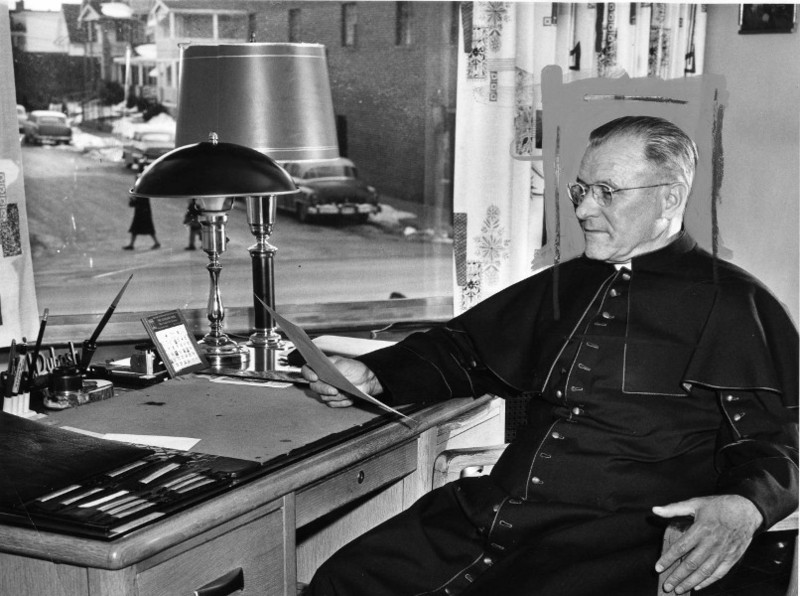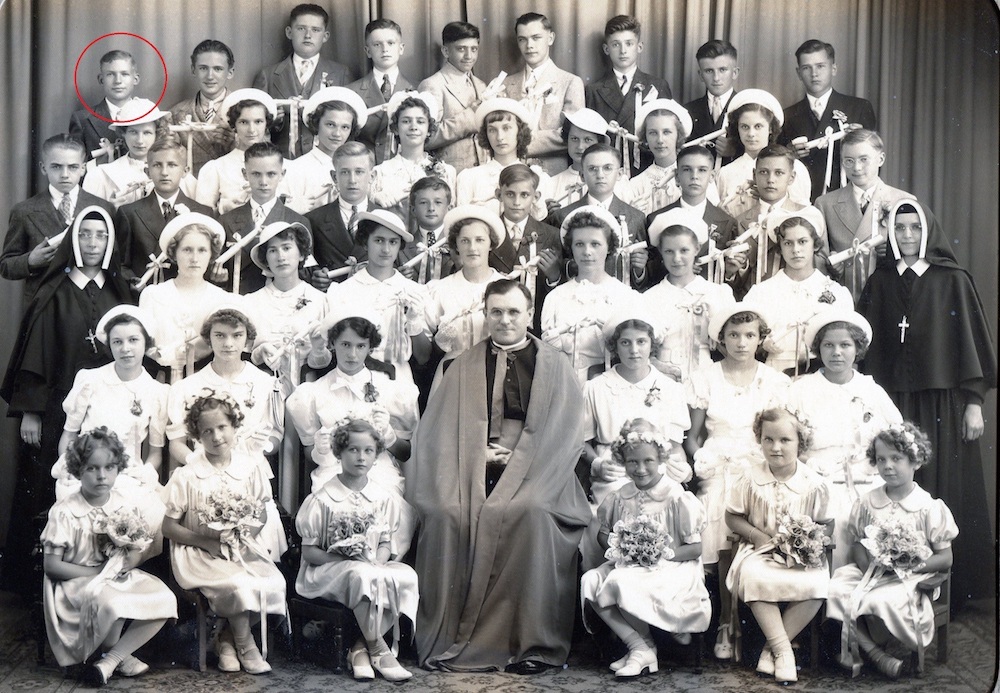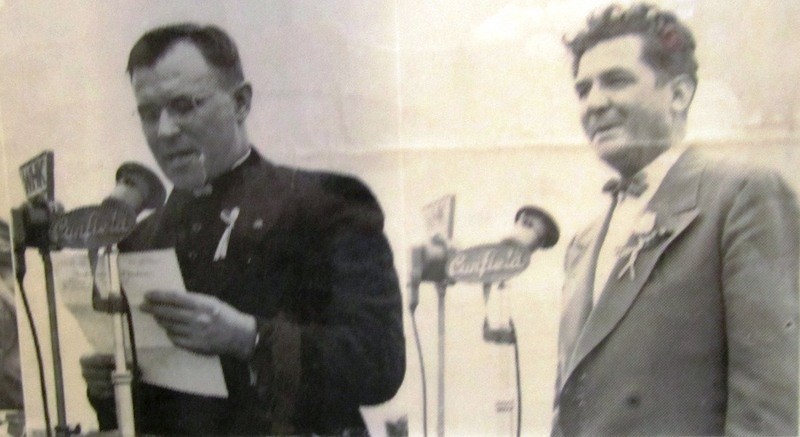
Monsignor Francis J. Dubosh did not suffer a fool gladly. When he wasn't satisfied with the speed exhibited by the editor of one national Slovak newspaper in publishing articles about Slovak American patriotism during World War II, he didn't mince his words. "Please don't muff this," he wrote the editor, "as you did with the naming of the three Liberty Ships."
World War II was a challenging time for many of America's Eastern European ethnic communities whose homelands were allied during the war with Hitler's Nazi Germany. Because of the close ties which many in these ethnic communities maintained with family and friends in the old homelands, their civic organizations often engaged in concerted action to demonstrate to the United States government that, despite overseas ties, their members were still loyal and patriotic Americans. One of America's foremost leaders during World War II who led such a concerted organizational effort for the national Slovak-American community was Monsignor Francis J. Dubosh, long-time pastor of Saints Cyril and Methodius Catholic Church in Lakewood, Ohio and the son of Slovak immigrants.
Francis J. Dubosh was born in the Tremont neighborhood of Cleveland on September 27, 1890. He was a graduate of St. Ignatius high school, Loyola College (now John Carroll University), and St. Mary's Seminary. In 1916, he was ordained as a Cleveland diocesan priest, and two decades later, in 1935, he was appointed a domestic prelate with the title of Monsignor. During the years leading up to World War II, Monsignor Dubosh was engaged in an active and fruitful career as pastor at Saints Cyril and Methodius. In addition to his cleric duties there, however, Dubosh, became an activist in a number of Slovak civic and religious organizations, and in the years leading up to World War II he attained leadership positions in several of these organizations, including the First Catholic Slovak Union, which had been founded in Cleveland in 1890, and the Slovak Catholic Federation, founded in Wilkes-Barre, Pennsylvania in 1911.
In 1943, as America entered into its second year of World War II, Monsignor Dubosh was elected President of the Slovak League of America, one of the most important Slovak national civic organizations. The Slovak League-- founded in Cleveland in 1907, had been instrumental in forging the Cleveland Agreement of 1915 and the Pittsburgh Agreement of 1918, which led to the creation of Czechoslovakia in 1918. As the new president of the Slovak League, Monsignor Dubosh traveled around the country during World War II promoting Slovak patriotism in America, but at the same time lobbying for an independent democratic Slovak state in post-war Europe.
Through Monsignor Dubosh's organizational efforts as President of the Slovak League, tens of millions of dollars were raised in war bonds purchases by Slovak-Americans. The "Slovak Record," a national newspaper published by the League, was strategically circulated to targeted government officials, creating a compelling record of the many acts of sacrifice and patriotism both at home and in the military overseas that Slovak-Americans performed during the war. And, although Slovakia did not emerge from World War II as an independent democratic state as he had worked and prayed for, his speeches, trips, and correspondence as president of the Slovak League of America during the war kept the vision alive.
After World War II ended and his tenure as President of the Slovak League came to an end, Monsignor Dubosh continued to give public speeches--some of them controversial, all of them passionate, and campaign for an independent democratic Slovak state in Europe. His vision finally materialized on January 1, 1993 when the Slovak Republic was created--an event that took place two and one-half decades after Monsignor Dubosh's death in Cleveland on Christmas day 1967.
Images










